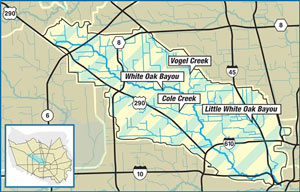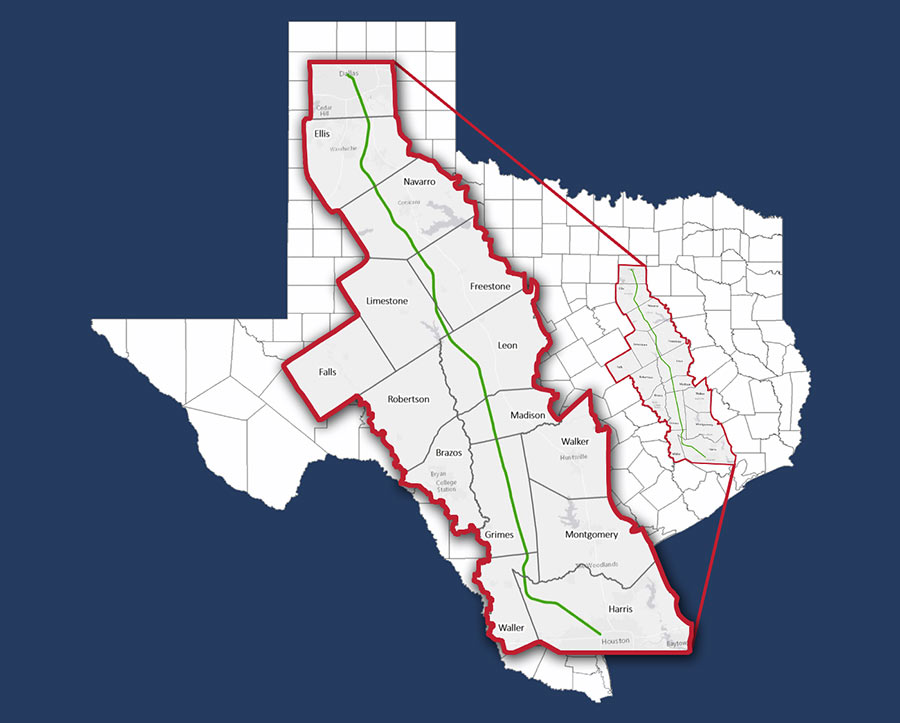TEXAS SUPREME COURT: FLOOD CONTROL AGENCY DIDN’T CAUSE WHITE OAK FLOODING BY NOT CONTROLLING IT  On Friday the state’s highest court reversed course on a class-action lawsuit filed by White Oak Bayou-adjacent homeowners flooded by turn-of-the-century storms including Allison, writes Mike Morris. Gabrielle Banks previously reported that some 200-plus families living along the upper reaches of bayou between Jersey Village and Houston Rosslyn Rd. had been asking for a collective $85 million or so to make up for flood damage and property devaluation they say was caused by the agency not completing some planned detention projects that haven’t gotten expected federal funding. The court decided last fall that the plaintiff’s case was strong enough to warrant a juried trial — at which point more than a dozen city and state government bodies filed letters asking it to please reconsider. Friday’s ruling came down in favor of the flood control agency, though the 4 dissenting judges wrote that the organization knew approved upstream development would lead to flooding without the planned projects, and therefore caused flooding by not requiring enough mitigation. The ruling could impact the similar lawsuit recently filed by a group of Memorial-area homeowners against the city and TIRZ 17, though in that case the group Residents Against Flooding is asking for flood control-related action rather than money. [Houston Chronicle; previously on Swamplot] Map of White Oak Bayou watershed: Harris County Flood Control District
On Friday the state’s highest court reversed course on a class-action lawsuit filed by White Oak Bayou-adjacent homeowners flooded by turn-of-the-century storms including Allison, writes Mike Morris. Gabrielle Banks previously reported that some 200-plus families living along the upper reaches of bayou between Jersey Village and Houston Rosslyn Rd. had been asking for a collective $85 million or so to make up for flood damage and property devaluation they say was caused by the agency not completing some planned detention projects that haven’t gotten expected federal funding. The court decided last fall that the plaintiff’s case was strong enough to warrant a juried trial — at which point more than a dozen city and state government bodies filed letters asking it to please reconsider. Friday’s ruling came down in favor of the flood control agency, though the 4 dissenting judges wrote that the organization knew approved upstream development would lead to flooding without the planned projects, and therefore caused flooding by not requiring enough mitigation. The ruling could impact the similar lawsuit recently filed by a group of Memorial-area homeowners against the city and TIRZ 17, though in that case the group Residents Against Flooding is asking for flood control-related action rather than money. [Houston Chronicle; previously on Swamplot] Map of White Oak Bayou watershed: Harris County Flood Control District





The only advantage that a homeowner receives by living within a jurisdiction, which participates in NFIP flood mitigation, is access to federally subsidized flood insurance. The most the homeowners can reasonably expect is to have their flood claim paid and nothing else; that is if they bought insurance in the first place. That is the way the program works. I am surprised that these cases weren’t dismissed summarily based on the merits or lack thereof. It is totally unreasonable to expect participating communities to have every possible mitigation measure in effect or that somehow, participation and mitigation will prevent flooding.
The white oak suit came very close to being successful – it was decided by one vote in the Suprem Court. The white oak plaintiffs could only ask for money for past damages which is a very difficult burden to meet, legally. The fact that the court had 4 conservative justices willing to award $85 million in damages against a government entity is a major sign that there is a judicial shift in thinking favoring flood victims. The Residents Against Flooding suit seeks concrete solutions to problems caused, by, well, concrete permitted and – in many cases – paid for by government entities.
Interesting that none of the coverage of this case focused on Justice Eva Guzman, who flipped her vote and, accordingly, the case. She didn’t write a separate opinion, so I guess we’ll never know why she changed her mind. Did I mention she’s running for re-election too? Hmmmm….
This is a tough one and we need a lawyer to comb through the details to actually communicate what it takes to win a lawsuit like this.
.
The one thing that keeps coming back in my mind is if you were to replace all the government entities with private company names you’d probably have a slam-dunk case for negligence and award.